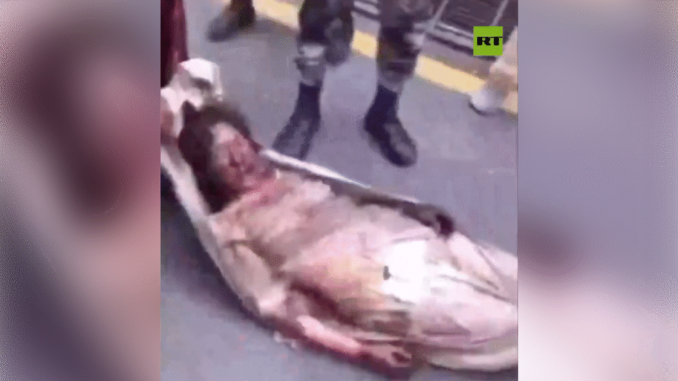
Published September 10, 2025
What’s Really Happening in Nepal
What began as a government decree to curb “misinformation” has plunged Nepal into one of its most turbulent crises in recent memory. In early September 2025, authorities abruptly blocked Facebook, YouTube, Instagram, X, and other major platforms, cutting off millions from their primary channels of communication. The move, framed as a legal necessity, was quickly perceived by the public as a blunt act of censorship. Within days, anger spilled onto the streets. Young Nepalis—armed not with social media posts but with raw outrage—stormed government buildings, clashed with security forces, and demanded sweeping political change. The ban, meant to control the narrative, has instead ignited a rebellion that threatens the country’s fragile democracy.
1. Social Media Ban
-
On September 4, 2025, Nepal’s Ministry of Communication and Information Technology ordered internet providers to block 26 platforms—including Facebook, Instagram, WhatsApp, X, YouTube, Reddit, Discord, LinkedIn, Snapchat, among others—because they did not register as required under a new directive and Supreme Court ruling.
-
TikTok, Viber, WeTalk, Nimbuzz, and Popo Live were exempt, having complied with registration requirements.
-
Human rights groups, such as the Committee to Protect Journalists, raised alarms that the sweeping ban severely undermines press freedom and public access to critical information.
2. Protests Erupt
-
Youth, especially Gen Z, perceived the ban as a direct attack on free expression and rebelled. Protests grew rapidly across Kathmandu starting around September 8–9, 2025.
-
Demonstrators stormed government buildings, including the Parliament, set them ablaze, and clashed violently with security forces.
3. Rising Death Toll and Violence
-
Official reports vary: death tolls range from 19 (Guardian) to 25 (AP), with hundreds injured and significant destruction of government infrastructure.
-
Tragic incidents occurred: protesters attacked former PM residences, and Rajyalaxmi Chitrakar—the wife of ex-PM Jhalanath Khanal—died from burn injuries after her home was set ablaze.
4. Military Intervention and Political Fallout
-
Nepal’s army was deployed to restore order in Kathmandu. Curfews were imposed, and army helicopters evacuated government officials.
-
Amid mounting chaos, Prime Minister KP Sharma Oli resigned, and President Poudel accepted his resignation (though he continues as a caretaker) .
-
Protest leaders have rallied behind calls for former Chief Justice Sushila Karki to lead an interim government, though the transition remains uncertain and divisive.
5. Underlying Frustrations & Broader Significance
-
The unrest reflects deeper grievances: widespread corruption, elite privilege (particularly visible among “political nepo babies”), youth unemployment, and democratic stagnation.
-
Balendra Shah (“Balen”), Kathmandu’s mayor and a former rapper, has emerged as a prominent youth figure offering anti-corruption leadership and social media-driven mobilization.
 Implications of Nepal’s Social Media Ban and Political Crisis
Implications of Nepal’s Social Media Ban and Political Crisis
1. Democratic Backsliding
-
The ban on Facebook, YouTube, X, and others undermines freedom of speech and press freedom.
-
Once governments normalize shutting down digital platforms under the label of “misinformation,” it sets a precedent for broader censorship.
-
Nepal risks sliding into an illiberal democracy where dissent is suppressed rather than debated.
2. Generational Divide
-
Gen Z—who rely heavily on digital platforms for activism, work, and social life—feel targeted and silenced, fueling stronger rebellion.
-
Older political elites are seen as out of touch, reinforcing resentment against “nepo babies” and entrenched dynastic politics.
-
The crisis may empower youth-driven movements and elevate figures like Balendra Shah (“Balen”) into national leadership.
3. Political Instability
-
PM Oli’s resignation shows that social media isn’t just a tech issue—it’s a regime-threatening force when tied to corruption and governance failure.
-
Calls for an interim government under figures like ex-Chief Justice Sushila Karki reveal cracks in the political class.
-
Prolonged instability could weaken Nepal’s fragile democratic institutions and invite opportunistic power grabs.
4. Regional & Global Implications
-
India and China will watch closely:
-
India fears unrest spilling across borders and weakening its influence in Nepal.
-
China may use Nepal’s digital vacuum to push its own platforms (like WeChat) as alternatives, expanding its soft power.
-
-
Western governments and rights groups may pressure Nepal, potentially leading to aid cuts or strained diplomatic ties.
5. Digital Economy Fallout
-
Businesses, freelancers, and influencers dependent on global platforms (YouTube creators, Instagram sellers, Facebook advertisers) lose income overnight.
-
The ban risks pushing talent out of Nepal or forcing them onto underground VPN networks, fragmenting the digital economy.
-
International tech firms may become reluctant to invest in Nepal’s market due to regulatory uncertainty.
6. Security Risks
-
Street clashes, arson, and attacks on politicians’ homes show how quickly censorship can spiral into law-and-order breakdown.
-
If trust in government erodes further, Nepal could face radicalization, growing black markets, and weakened state control in rural areas.
-
The army’s involvement raises the specter of military overreach in politics if civilian leaders remain paralyzed.
7. Symbol for Global Free Speech Debate
-
Nepal could become a case study in how censorship backfires—igniting more instability rather than preventing it.
-
This moment might influence how other countries handle “misinformation” laws, especially in Asia and Africa where governments have flirted with social media restrictions.
-
It also pressures Big Tech to negotiate compliance versus resisting authoritarian demands.
 Overall Takeaway:
Overall Takeaway:
Nepal’s sudden ban on social media was intended as a quick fix against “misinformation,” but it has instead exposed the fragility of the country’s democratic system. What began as a regulatory decree has spiraled into nationwide protests, violent clashes, and the resignation of the prime minister. For Nepal’s restless youth, the blackout became a symbol of deeper frustrations—corruption, nepotism, and leaders who appear more interested in silencing voices than serving the people.
The events unfolding in Kathmandu are more than a local political drama; they are a warning for governments worldwide. Restricting access to digital platforms in the name of order risks igniting the very chaos it seeks to prevent. As Nepal struggles to find new leadership and restore stability, its crisis stands as a reminder: in the digital age, freedom of expression is not just a right—it is the foundation of political legitimacy.
SOURCES: THE GATEWAY PUNDIT – CHAOS IN NEPAL: Politicians BAN Social Media over Alleged “Misinformation” — Furious Gen Z Protesters TORCH Parliament, Ex-PM’s Wife Burned Alive as Protesters Set His Home on Fire
THE TIMES – Nepal orders curfew in Kathmandu as military meets protesters
TECH CRUNCH – Nepal blocks Facebook, Instagram, YouTube, X over rule breach, amid censorship concerns





Be the first to comment